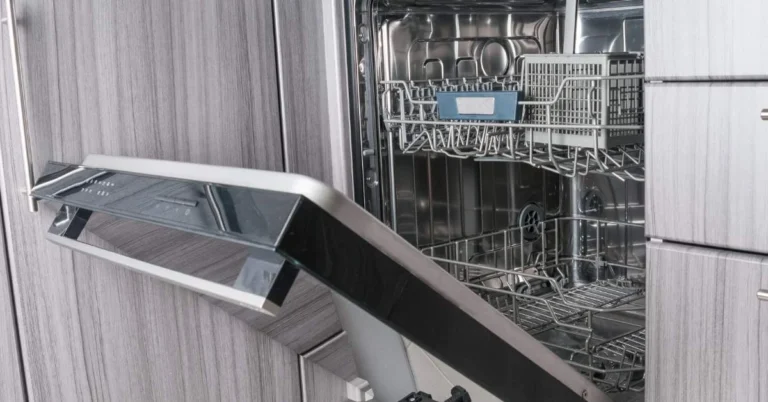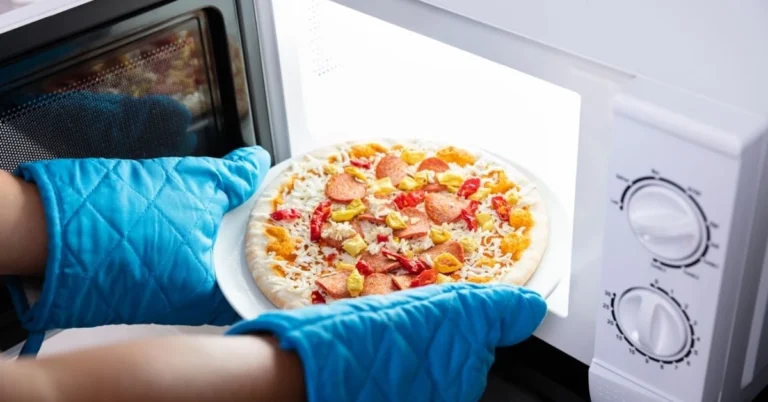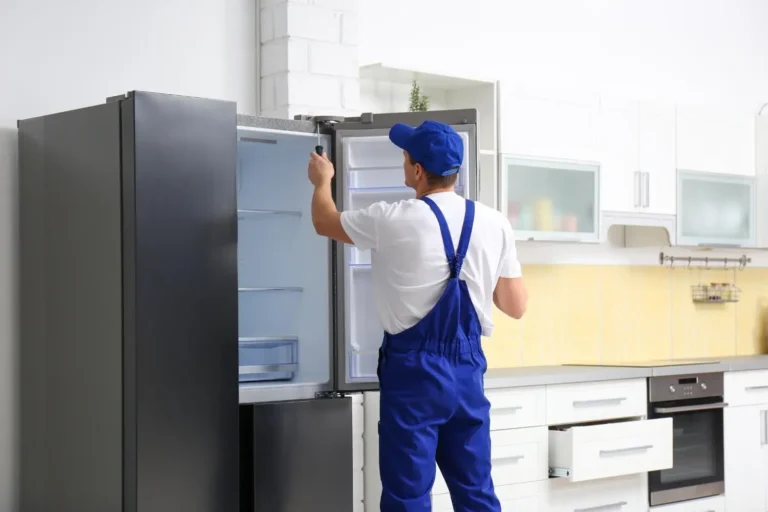Nothing disrupts your Niceville kitchen routine quite like a gas stove that suddenly stops working. I know the frustration all too well: dinner plans ruined, takeout ordered again, and worrying about what’s going wrong with your once-reliable stove. It feels like everything stops when your stove stops doing its job.
Most gas stove problems are easier to fix than you might think. From ignition issues to uneven flames, there’s a solution for nearly every issue. In this guide, I’ll walk you through the most common stove problems, offering you simple fixes that you can try yourself. If it’s something more serious, I’ll let you know when it’s time to call a professional for help. Keep reading to get your stove working again quickly.
Reasons Why Gas Stove Not Working
Reasons Why Gas Stove Not Working
I understand how frustrating it can be when your gas stove suddenly stops working, especially when you’re in the middle of preparing a meal. In this guide, I’ll walk you through the most common reasons why your gas stove might not be functioning correctly and provide practical solutions to get it working again. Most of these issues can be resolved without calling a professional, saving you time and money.
The Gas Is Off
Your gas stove won’t work if the gas supply is turned off. This might happen accidentally during cleaning or if someone in your household turned it off for safety reasons.
To check if this is the issue, locate the gas shutoff valve behind or beside your stove. The valve should be parallel to the gas line when it’s open. If it’s perpendicular (forming a 90-degree angle), it’s closed. Turn the valve handle to align it with the gas line to restore the gas flow.
If your stove still doesn’t work after opening the valve, contact your gas supplier to verify there are no interruptions in service. Remember, it’s always better to check this simple solution first before assuming there’s a more complex problem with your stove.
The Stove Is Unplugged
Even gas stoves need electricity to power the ignition system and controls. If your stove is completely unresponsive, it might be unplugged.
Check behind your stove to ensure the power cord is securely plugged into the outlet. If it is plugged in, make sure the plug isn’t loose or damaged. Also, verify that the outlet is working by plugging in another appliance.
If someone in your household unplugged the stove for cleaning or safety reasons, they may have forgotten to plug it back in. After confirming the furnace is properly plugged in, try turning it on again. If the stove powers on but the burners still don’t light, you’ll need to investigate other potential issues.
The Breaker Is Tripped
A tripped circuit breaker can prevent your gas stove from receiving the electrical power it needs for ignition and controls. This commonly happens when too many appliances are running on the same circuit.
To fix this issue:
* Locate your home’s electrical panel or breaker box
* Look for a breaker that’s flipped to the “off” position or is sitting between “on” and “off.”
* Flip the breaker entirely to the “off” position first, then firmly push it back to the “on” position
Try using your stove again after resetting the breaker. To prevent this from happening in the future, avoid using multiple high-energy appliances on the same circuit simultaneously. If the breaker trips again shortly after resetting it, an electrical issue with your stove or circuit might require professional attention.
Lack of Gas Supply
Sometimes, this is your stove but with your home’s gas supply. An interruption in gas service will prevent all gas appliances from working correctly.
Check if other gas appliances in your home, like a gas water heater or furnace, are working. If none are functioning, you likely have a gas supply issue. Contact your gas company to report the problem and ask if there’s a service outage in your area or if your service has been disconnected for any reason.
If you smell gas or suspect a gas leak, leave your home immediately and call your gas company from a safe location. Never attempt to fix a gas leak yourself, as this can be extremely dangerous. Wait for your gas supply to be restored before using your stove again.
Lack of Electrical Power
While gas stoves use gas for cooking, they rely on electricity for ignition systems, control panels, and display lights. Without electrical power, your gas stove won’t function properly.
If your stove shows no signs of power (no lights, no display), check these potential causes:
* Verify the power cord is securely connected to a working outlet
* Test the outlet by plugging in a small appliance like a lamp
* Check your home’s circuit breaker to ensure it hasn’t tripped
If the outlet isn’t working, try plugging the stove into a different outlet temporarily to confirm the issue. For hardwired stoves, check if there’s power reaching the junction box. If you’ve confirmed power is available, but your stove still won’t turn on, there might be an internal electrical issue requiring a professional diagnosis.
Bad Spark Ignition Module
The spark ignition module creates the spark that lights your gas burners. When this component fails, you’ll hear clicking sounds, but no flame will appear, or there might be no clicking at all.
Try turning on a burner and listening to clicking sounds to identify if this is your issue. If you hear clicking but no flame appears after 30-60 seconds, or if there’s no clicking, the ignition module might be faulty. This component is usually located under the cooktop or behind the control panel.
Replacing a spark ignition module typically requires professional assistance. Contact a qualified technician who can properly test and replace the module if necessary. This repair requires working with electrical components and gas lines, so it’s best left to professionals who can ensure the repair is done safely.
The Pilot Light Is Out
Older gas stoves often use a pilot light system instead of electronic ignition. If your pilot light goes out, your burners won’t light.
To check if your stove has a pilot light, look for a small, continuous flame under the cooktop or in the oven. If you don’t see a flame, you must relight it. Consult your stove’s manual for the exact location and relighting procedure, as it varies by model.
Generally, you’ll need to:
* Locate the pilot light opening
* Hold a lit match or lighter near the opening while pressing the pilot light button
* Continue holding the button for about a minute after the pilot lights
If the pilot light doesn’t stay lit after several attempts, there might be an issue with the thermocouple or gas supply. In this case, it’s best to contact a professional technician for assistance, as continuing to attempt lighting could create a dangerous situation.
The Burner Is Clogged by Food Debris
Food spills and boil overs can clog the burner ports, preventing gas from flowing properly and causing uneven flames or no flame at all.
To fix this issue, make sure your stove is completely cool and the gas is turned off. Remove the burner grates and caps, then inspect the burner heads for food debris. Use a paperclip or small needle to clear any clogged ports carefully. For stubborn debris, soak the burner heads in warm, soapy water for 20-30 minutes.
After cleaning, thoroughly dry all components before reassembling them. Please make sure the burner caps are correctly aligned when you put them back. Regular cleaning of your burners will prevent this issue from recurring and keep your stove functioning efficiently. If cleaning doesn’t resolve the problem, there might be a more serious clog requiring professional attention.

Dirty Surface Burners
Over time, grease and food particles can build up on your burners, affecting the gas flow and ignition. This buildup can cause weak, uneven flames or prevent ignition altogether.
To clean your surface burners, wait until the stove is completely cool, then remove the burner grates and caps. Soak them in warm, soapy water for about 20 minutes. For the burner heads (which are usually fixed to the stove), use a soft brush or toothbrush to scrub away debris gently. Pay special attention to the ignition port where the spark occurs.
After cleaning, rinse all removable parts thoroughly and let them dry completely before reassembling. Regular maintenance cleaning will keep your burners functioning properly and extend the life of your stove. If you notice any damaged components during cleaning, they may need replacement for optimal performance.
The Vent System Is Overreacting
A powerful range hood or ventilation system can sometimes pull too much air away from your stove, affecting the flame stability or even extinguishing the flame entirely.
If you notice your burner flames fluctuating or going out when your vent is running, try reducing the fan speed on your range hood. Alternatively, you can increase the burner setting slightly to create a stronger flame that won’t be affected by the airflow.
For a more permanent solution, you might need to adjust the air shutter on your burners (if your model allows this) or have your ventilation system recalibrated. If changing the vent speed doesn’t help, consider having a professional inspect both your stove and ventilation system to ensure they’re properly balanced for your kitchen setup.
A Burner Cap Is Misaligned
Burner caps must be seated adequately for your gas stove to function correctly. A misaligned cap can block gas flow or cause uneven flames, clicking sounds, or no ignition.
Check each burner cap to ensure it’s centered and sitting flat on the burner head. Remove and reposition any caps that appear crooked or off-center. Most caps have notches or grooves that must align with corresponding parts on the burner head.
If a burner cap is damaged or warped, it may need replacement. Contact your stove manufacturer for the correct replacement part. Proper alignment of burner caps is a simple fix that can resolve many common gas stove issues. Make it a habit to check the alignment whenever you clean your stove to prevent future problems.
There’s a Faulty or Wet Igniter
A wet or faulty igniter is a common reason why gas burners won’t light. Spills and cleaning can leave moisture on the igniter, temporarily preventing it from creating a spark.
If you’ve recently cleaned your stove or had a spill, check the igniter (the small ceramic nub usually located on the side of the burner). Make sure it’s completely dry by gently blotting it with a paper towel. Allow the area to air dry for 15-30 minutes before attempting to use the burner again.
For igniters that continue to fail when dry, there may be an electrical issue. Listen for clicking when you turn the burner knob. No clicking usually indicates a faulty igniter or wiring problem. If drying the igniter doesn’t solve the problem, you may need to replace the igniter or have a professional check the electrical connections.
The Thermocouple Is Defective
The thermocouple is a safety device that shuts off gas flow if it doesn’t detect heat from the flame. A defective thermocouple can cause your burner to light momentarily and then go out or prevent lighting altogether.
To check if the thermocouple is the issue, observe if your burner lights but then immediately goes out when you release the knob. This typically indicates a thermocouple problem. The thermocouple should be positioned close to the flame – if it’s bent away from the flame, try carefully bending it back into position.
If repositioning doesn’t help, the thermocouple likely needs replacement. While this is a relatively simple part to replace, it involves working with gas components. Unless you have experience with gas appliance repair, I recommend contacting a qualified technician to replace the thermocouple and ensure proper gas stove operation safely.
Failed Burner Ignition Switch
The ignition switch, controlled by your burner knob, can wear out over time. When it fails, you may hear no clicking sound when turning the knob, or the clicking might be inconsistent.
To determine if this is your issue, try turning on each burner one by one. If some burners click while others don’t, or if none of them click, you likely have a faulty ignition switch. This component is located behind the control knob and connected to the ignition module.
Replacing an ignition switch typically requires removing the control panel and disconnecting the old switch. Since this involves working with both electrical components and potentially gas connections, I recommend consulting a professional technician for this repair. They can ensure the correct replacement part is used and properly installed for the safe operation of your stove.
Fast Gas Stove Repairs by Beach2Bay Appliance Service
Get your gas stove working like new with Beach2Bay Appliance Service! Our expert technicians provide quick and reliable repairs to restore your kitchen’s functionality. Call now for efficient service, and get your stove back in action today!
Author Profile
- John Raymond Hagler
- Beach2Bay Appliances is a trusted name in Florida for professional appliance repair services. Serving homeowners, realtors, and property managers, our experienced team focuses on reducing costly breakdowns and maximizing appliance efficiency. Committed to reliability, transparency, and customer care, we help maintain the value and functionality of homes and rental properties through routine service and urgent repairs.
Latest entries
 BlogsAugust 30, 2025Oven Smells Like Burning While Cooking? Here’s the Solution
BlogsAugust 30, 2025Oven Smells Like Burning While Cooking? Here’s the Solution BlogsAugust 29, 2025Why Your Dishwasher Isn’t Cleaning Dishes and How to Fix It
BlogsAugust 29, 2025Why Your Dishwasher Isn’t Cleaning Dishes and How to Fix It BlogsAugust 29, 20257 Reasons Your Microwave Isn’t Working and How to Fix It Quick
BlogsAugust 29, 20257 Reasons Your Microwave Isn’t Working and How to Fix It Quick BlogsAugust 27, 2025Why Your Refrigerator Isn’t Cooling and How to Fix It
BlogsAugust 27, 2025Why Your Refrigerator Isn’t Cooling and How to Fix It




